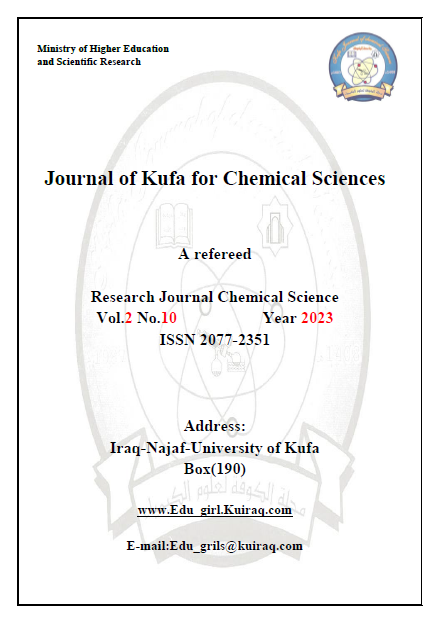The Theoretical Investigation by QTAIM Approach to Chemical Bonding of a Di-Rhenium Bis(Triphenylphosphine) Carbonyl Cluster Containing Sulfuric and Hydrido Bridge: [Re2(CO)6(μ-S)(μ-H)(PPh3)2]
DOI:
https://doi.org/10.36329/jkcm/2023/v2.i10.12211Keywords:
AIM approach, Bonding analysis, di-rhenium cluster, DFT calculation, Topological propertiesAbstract
Scientists used the quantum theory of atoms in molecules (QTAIM) to calculate and interpret various electron density parameters for a di-rhenium bis(triphenylphosphine) carbonyl cluster containing sulfuric and hydrido bridge: [Re2(CO)6(μ-S)(μ-H)(PPh3)2]. They analyzed the bond critical points and compared them with data from previous organometallic system studies. The researchers were able to compare the topological processes of different atom-atom interactions based on these results.
The calculations showed that there were no bond critical points or identical bond paths between Re-Re in the core of the cluster. The electron density distribution was affected by the position of bridging hydride and sulfur atoms coordinated to Re-Re, which significantly affected the bonds between these transition metal atoms. However, the calculations did confirm the presence of a 6c–8e bonding interaction delocalized over HRe2SP2 in the cluster.
The scientists found that the Re-H and Re-S bonds in this cluster exhibited typical closed-shell interactions, with small values for ρ(b) and Laplacian ∇2ρ(b) above zero and small positive values for total energy density H(b). Similarly, the bond interactions between phosphine metal atoms and the C atoms of the phenyl ring ligands showed properties similar to open-shell interactions in the QTAIM classification.
Downloads
Downloads
Published
How to Cite
Issue
Section
License
Copyright (c) 2023 Journal of Kufa for Chemical Sciences

This work is licensed under a Creative Commons Attribution 4.0 International License.
Open-access Statement
The journal « Journal Of Kufa For Chemical Sciences» provides immediate open access to its content on the principle that making research freely available to the public supports a greater global exchange of knowledge. Full-text access to scientific articles of the journal is presented on the official website in the Archives section.
This is in accordance with the BOAI definition of open access. The licensing policy is compatible with the overwhelming majority of open access and archiving policies.
The journal «Journal Of Kufa For Chemical Sciences» is an open access journal, which means all its content is freely available without charge to the user or his/her institution. Users are allowed to read, download, copy, distribute, print, search, or link to the full texts of the articles, or use them for any other lawful purpose, without asking prior permission from the publisher or the author as long as they cite the source.The journal is licensed by Creative Commons Attribution International( CC Attribution 4.0) .


